
Key Takeways
- Brand management goes beyond logos and visuals. It's a continuous process of maintaining a consistent, relevant brand experience across every customer touchpoint.
- Effective brand management relies on five pillars: identity, positioning, consistency, equity & loyalty, and internal culture.
- Cohesive messaging and visuals not only drive brand recognition but also boost customer loyalty, pricing power, and long-term equity.
- Real-world examples from companies like Apple, Marriott, and Patagonia demonstrate how these principles create tangible business value.
- Using brand guidelines, cross-team alignment, and asset management tools like BrandLife can help scale your brand management without losing control.
Brand management is not just about logos and color schemes. It shapes audience perceptions, trust, and memorability across every touchpoint.
When your brand presence feels inconsistent or fragmented, you risk losing customer trust and weakening your overall impact. To make your brand stand out, you need a clear, strategic approach to brand management.
This comprehensive guide will define brand management and its core pillars, explore real-world examples from leading brands, provide actionable strategies, and answer frequently asked questions to help you build a cohesive, scalable brand. You'll discover both fundamental principles and advanced techniques used by successful brand managers across industries.
What is Brand Management?
Unlike branding, which is a one-time exercise, brand management is an ongoing effort. It ensures that every expression of your brand remains aligned, relevant, and consistent as your business evolves.
How Brand Management Helps Create Trust And Drive Value
Brand management drives recognition by ensuring visual identity, messaging, and brand experiences are consistent across every touchpoint.
When done right, this makes your brand easier to identify and recall in a crowded market.
It also builds trust by consistently delivering on your brand’s promises, reducing perceived risk, and encouraging long-term customer loyalty.
Ultimately, effective brand management fosters lasting value.
A well-managed brand commands higher brand equity—the premium customers are willing to pay because they view the brand as credible, relevant, and differentiated. This contributes to pricing power, customer lifetime value, and a defensible competitive edge.
The 5 Key Pillars of Brand Management
Effective brand management builds a system to keep your brand consistent, relevant, and aligned as it grows, based on five key pillars guiding its look, sound, and behavior internally and externally.
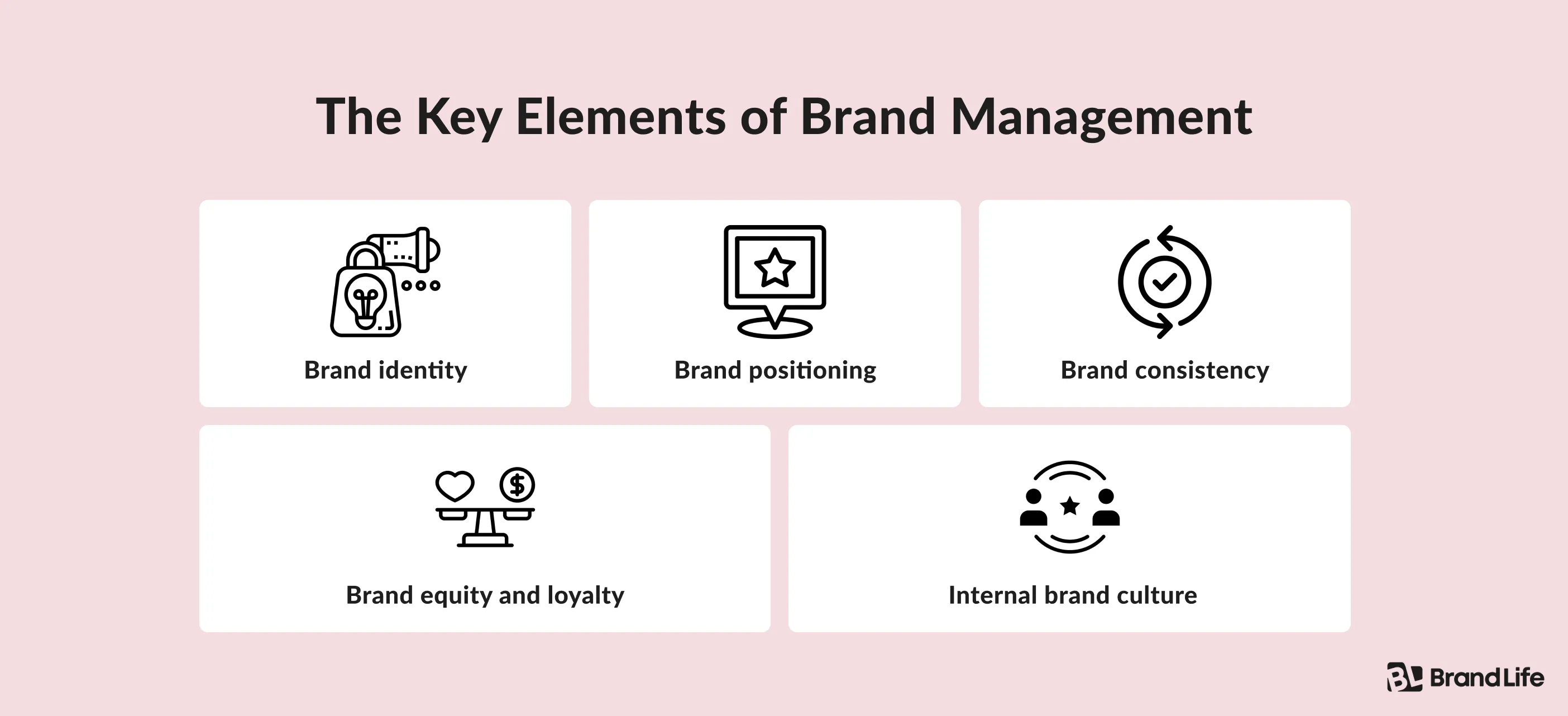
Let’s understand each of these pillars to see how they work together to shape a cohesive, high-impact brand.
1. Brand identity
Brand identity is the collection of visual and verbal elements that distinguish your brand and make it recognizable to your audience.
This includes your logo, color palette, typography, imagery style, tone of voice, and messaging framework. Together, these components form the outward expression of your brand’s personality, values, and promise.
A strong brand identity doesn’t just look good but also communicates meaning. It signals who you are, what you stand for, and how you're different from competitors.
✅ A brand with vibrant colors and friendly typography signals playfulness and accessibility, whereas a minimalist aesthetic and refined tone of voice conveys professionalism and trust.
2. Brand positioning
Brand positioning defines where you sit in the market relative to your competitors.
It clarifies your unique value and why customers should choose you. Great positioning starts with knowing your audience and highlighting what only you can deliver.
✅ Take architecture firms, for example. They might position themselves as highly technical and compliance-driven or sustainable and human-centered. Both serve a similar audience but use brand positioning to attract different types of clients.
Effective positioning influences campaign messaging, visual strategy, and even pricing decisions.
3. Brand consistency
Consistency ensures your brand looks, sounds, and feels the same across channels—from your website to social media to in-store experiences.
But as companies scale across teams, markets, and geographies, maintaining consistency becomes more challenging.
✅ Franchise brands struggle when locations change messaging or visuals independently, causing a fragmented experience. That’s why brands like Starbucks and Netflix stand out—they keep a cohesive identity across all touchpoints worldwide.
A strong brand management tool like BrandLife makes global consistency possible. With centralized asset libraries, pre-approved templates, and clear brand guidelines, it gives teams the tools they need to stay on-brand, without sacrificing speed or creativity.
4. Brand equity and loyalty
Brand equity is the perceived value of your brand. It builds over time through positive interactions and consistent messaging.
With high equity, you unlock loyalty, referrals, and resilience during market shifts.
✅ Tracking brand equity involves a mix of qualitative and quantitative methods, including surveys, net promoter score (NPS), repeat customer data, and customer sentiment on social media.
5. Internal brand culture
Internal brand culture is how well your team understands, embraces, and represents the brand. When your internal teams live the brand values, it naturally extends to customer interactions and builds authenticity.
Supporting Pillars for Comprehensive Brand Management
While the five core pillars form the foundation, three additional components strengthen your brand management approach:
Brand Communication
Effective brand communication translates your identity and positioning into compelling messages that resonate with your audience. This includes not just what you say, but how, when, and where you say it—ensuring your communication style aligns with your brand personality across all channels.
Customer Experience
Your brand exists primarily in the experiences customers have with it. Every interaction—from website navigation to customer service calls to product usage—shapes brand perception. Mapping and optimizing these touchpoints ensures your brand promise matches the delivered experience.
Measurement & Monitoring
What gets measured gets managed. Regular brand tracking through surveys, social listening, and analytics helps you understand how your brand is perceived, where improvements are needed, and how brand equity is developing over time.
Why Brand Management Matters For Businesses
Many businesses face challenges like inconsistent branding, poor recognition, and fragmented customer experiences. Disorganization often happens when digital assets are scattered across multiple platforms, making it difficult to find what’s needed.
This inefficiency wastes valuable time and lowers productivity. Additionally, teams struggle to collaborate effectively without centralized resources, leading to version control problems and miscommunication.
Brand management solves these issues by organizing and maintaining brand assets in one place, ensuring consistency and easy access. This improves team collaboration and streamlines workflows.
Effective brand management with tools like BrandLife helps you achieve:
- Customer trust: Consistency builds credibility and reliability
- Operational efficiency: Reduces duplicated work and asset confusion
- Marketing ROI: Clear, unified messaging connects faster and converts better
- Competitive advantage: A strong, recognizable brand stands out in crowded markets.
3 Brand Management Strategies You Must Know
Brand management shapes how your brand exists in the real world. The best brands do more than stay consistent—they build emotional connections, inspire trust, and remain culturally relevant.
Here are three proven brand management strategies to shape customer perception and encourage loyalty:
1. Create a compelling brand story

When Glossier launched, it didn’t just sell skincare but told the story of beauty inspired by real people, not perfection.
The brand’s founder, Emily Weiss, started by blogging about everyday beauty routines, which made customers feel seen and heard. That narrative grew into a movement—and a multimillion-dollar brand with a loyal following.
2. Build a personal connection with consumers
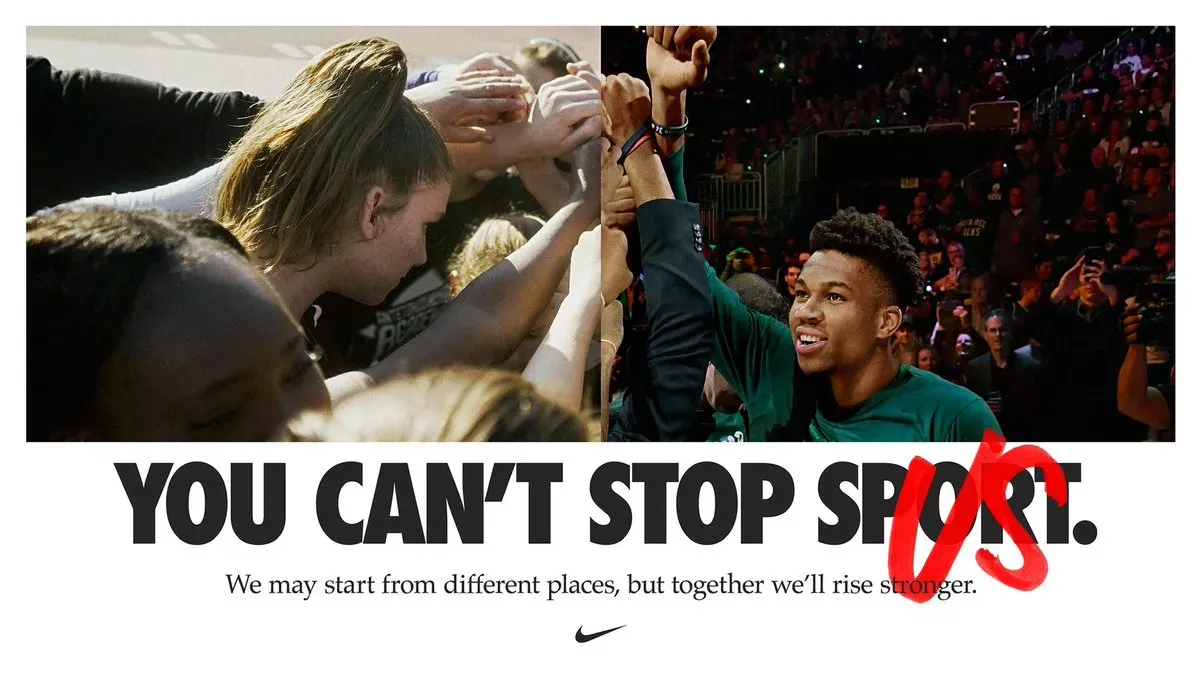
Nike doesn’t just market products; it celebrates the individual athlete in everyone.
Its “You Can’t Stop Us” campaign spotlighted real people overcoming adversity through sport, instantly building emotional resonance. Such storytelling reinforces Nike’s mission while deepening customer loyalty.
3. Collaborate with influencers

When Fabletics partnered with influencers like Demi Lovato, Khloé Kardashian, and everyday fitness creators, it boosted visibility and trust. These collaborators didn’t just wear the leggings, but shared their fitness journeys and offered styling tips.
They created content that reflected the brand’s voice and values, helping Fabletics connect authentically with its audience and grow into a leading name in activewear.
Brand Management Examples: Success Stories in Action
Effective brand management transforms theoretical principles into tangible business success. These real-world examples demonstrate how brands across different industries have mastered the art of brand management to build recognition, loyalty, and market dominance.
Apple: The Gold Standard of Brand Consistency
Apple exemplifies how integrated brand management creates extraordinary value. Their brand management excellence is evident in:
- Visual consistency: The minimalist aesthetic extends from product design to retail spaces to packaging
- Experience alignment: The unboxing experience, in-store service, and digital interfaces all deliver the same premium feeling
- Internal culture: Employees embody the brand's innovative spirit and attention to detail
This holistic approach has helped Apple maintain premium pricing and fierce customer loyalty despite intense competition in the tech space.
Marriott: Multi-Brand Portfolio Management
Marriott International demonstrates masterful management of multiple brand identities under one corporate umbrella:
Marriott manages 30+ distinct hotel brands—from luxury (Ritz-Carlton) to select-service (Courtyard)—each with its own identity while maintaining consistent service standards and rewards program integration across all properties.
Their centralized brand management system ensures each brand maintains its unique positioning while benefiting from shared resources and customer data insights.
This sophisticated approach allows Marriott to serve different market segments while building overall brand equity and customer loyalty across their entire portfolio.
Patagonia: Values-Driven Brand Management
Patagonia shows how aligning brand management with core values creates authentic connections:
Their environmental activism isn't just marketing—it's integrated into product design, supply chain decisions, and corporate policies, creating genuine brand authenticity that resonates with their target audience.
These diverse examples illustrate that regardless of industry or size, consistent application of brand management principles creates lasting value and competitive advantage.
Strategic Brand Management: Framework & Process
Strategic brand management is a systematic approach to building, measuring, and managing brand equity over time. It involves aligning brand strategy with business goals, monitoring brand performance, and adapting to market changes.
Step-by-Step Framework for Strategic Brand Management
- Brand Audit: Assess the current state of your brand, including strengths, weaknesses, opportunities, and threats.
- Define Brand Strategy: Establish your brand’s mission, vision, values, positioning, and target audience.
- Develop Brand Identity: Create or refine your visual and verbal brand assets (logo, messaging, guidelines).
- Implement Brand Management System: Use a brand management platform to centralize assets and ensure consistency.
- Brand Communication: Roll out your brand across all channels, ensuring alignment with guidelines.
- Monitor & Measure: Track brand performance using metrics and KPIs.
- Adapt & Evolve: Refine your strategy based on feedback and market trends.
Brand Management Checklist: What to Look for
When evaluating or implementing brand management solutions, ensure they include these essential capabilities
Quick Assessment Questions
- Can team members find brand assets in under 30 seconds?
- Is there a clear process for updating and distributing brand guidelines?
- Do you have visibility into how and where your brand assets are being used?
- Can remote teams and partners access brand resources easily and securely?
- Is there a formal approval process for new brand materials?
If you answered "no" to any of these questions, your brand management system likely needs improvement.
- Centralized digital asset storage: A single source of truth for all brand assets eliminates confusion and ensures teams always access the latest approved versions. BrandLife's digital asset storage organizes files with AI-powered tagging for easy retrieval.
- Brand guideline portal: Interactive, accessible guidelines help teams understand and apply brand standards correctly. Look for solutions that offer visual examples and contextual guidance.
- AI-powered search and tagging: Advanced search capabilities save time and reduce frustration when locating specific assets. Automatic tagging ensures assets remain findable even as libraries grow.
- Collaboration features: Tools that facilitate feedback, approvals, and version control streamline creative workflows and maintain brand integrity during content creation.
- Version control: Tracking asset history prevents outdated materials from being used and provides an audit trail of brand evolution over time.
- Integrations with other marketing tools: Seamless connections with design software, marketing platforms, and content management systems create efficient workflows.
- Role-based permissions and brand governance: Granular access controls ensure only authorized users can modify brand assets while allowing broader access for approved usage.
- Analytics and reporting: Insights into asset usage and engagement help optimize your brand management strategy and demonstrate ROI.
Benefits & Importance of Brand Management
Investing in brand management delivers measurable business value. Here are some of the top benefits:
- Increased Brand Equity: Strong brands command higher prices and greater loyalty.
- Consistent Customer Experience: Cohesive branding builds trust and recognition.
- Competitive Advantage: Differentiation in crowded markets leads to greater market share.
- Improved Efficiency: Centralized brand assets and guidelines reduce time spent searching and recreating materials.
- Risk Mitigation: Brand governance helps avoid costly mistakes and off-brand messaging.
6 Best Practices For Effective Brand Management
Besides setting guidelines, effective brand management operationalizes your brand across teams, tools, and touchpoints. These four best practices help your brand stay consistent:
1. Develop clear brand guidelines
Clear, comprehensive brand guidelines enable consistent brand expression. They cover everything from visual identity (logos, fonts, color palette) to voice, tone, and messaging rules. But documentation alone isn’t enough.
Your guidelines must be accessible, easy to follow, and regularly updated. For example, Slack’s brand guidelines clearly show logo usage, tone of voice, and even photography style—making it easy for anyone to stay on-brand.
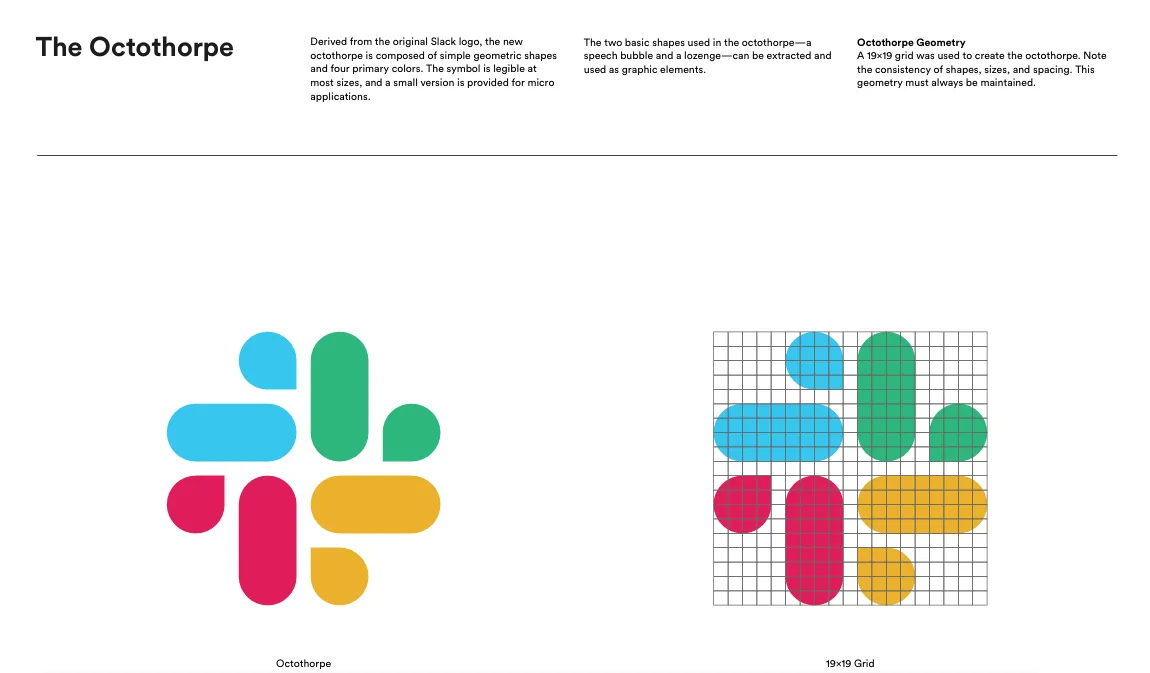
Strong guidelines also define what not to do, preventing misinterpretations. When enforced through style guides or approval workflows, they empower teams to create aligned content without constant oversight.
2. Align cross-functional teams
Marketing, creative, customer support, and leadership together shape the brand, so they must share the same understanding of what the brand stands for and how it should be expressed.
Regular brand training, internal newsletters, and onboarding modules can help reinforce this.

For instance, a company like Airbnb ensures alignment through company-wide storytelling sessions, brand education resources, and leadership modeling. This cross-functional commitment helps deliver a seamless brand experience from advertising to customer service.
3. Use brand governance tools and technology
Brand asset management platforms like BrandLife help teams maintain control over brand assets at scale with the following features:
Centralized assets
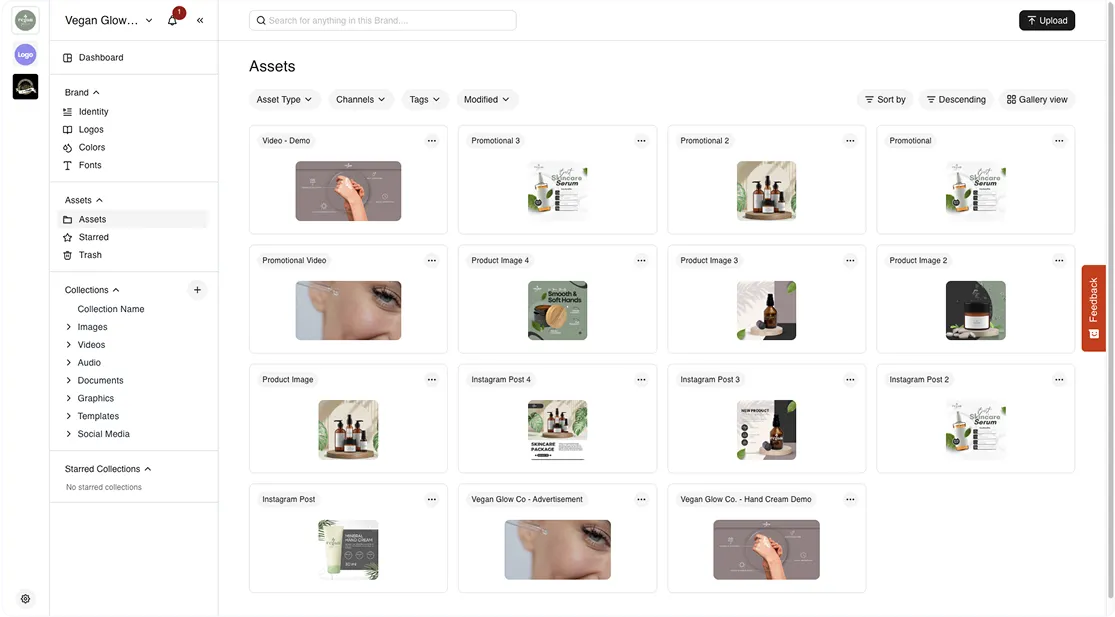
Keep all logos, templates, guidelines, and visuals in one place so teams don’t waste time searching or recreating materials.
Version control

Ensure everyone is using the latest approved versions—no outdated logos or off-brand designs slipping through the cracks.
Permission settings

Control who can view, edit, or publish assets across internal teams and external partners, protecting brand integrity.
By automating approvals and tracking usage, these tools reduce errors and strengthen overall brand compliance.
4. Monitor and measure brand health
To understand how a brand is performing across channels over time, companies track these key metrics:
Brand awareness
Companies gauge brand awareness by using surveys with tools like SurveyMonkey, monitoring social media mentions via Brandwatch or Hootsuite, and analyzing website traffic with Google Analytics. They can also use brand tracking platforms like YouGov BrandIndex to measure recognition continuously.
Social sentiment analysis
Companies measure social sentiment by analyzing online conversations using tools like Sprout Social, Brandwatch, or Talkwalker. These platforms help track positive, negative, and neutral mentions to understand public perception of the brand.
Brand equity
Brand equity is measured by assessing factors like customer perception, brand loyalty, and market performance using methods such as surveys, financial analysis, and customer feedback. Tools like Qualtrics, YouGov BrandIndex, and BrandZ provide data and insights to quantify brand equity effectively.
Brand loyalty
Brand loyalty is measured by tracking repeat purchase rates, customer retention, and engagement through methods like surveys and purchase data analysis. Tools such as Salesforce, HubSpot, and NPS platforms like Delighted help monitor loyalty and customer satisfaction over time.
5. Foster Cross-Team Collaboration
Brand management isn't just the responsibility of marketing—it requires alignment across departments:
- Regular brand workshops bring together marketing, sales, product, and customer service teams to ensure consistent understanding and application of brand principles
- Shared access to brand resources empowers all departments to represent the brand accurately
- Cross-functional brand councils can review major initiatives to ensure brand alignment before launch
Cross-functional collaboration strengthens brand consistency
6. Leverage Technology Strategically
Modern brand management requires sophisticated tools to scale effectively:
- Digital asset management (DAM) centralizes and organizes all brand assets
- Template systems enable non-designers to create on-brand materials
- Brand monitoring tools track mentions and sentiment across digital channels
- Integration platforms connect brand resources with marketing execution tools
When And How To Build An Internal Brand Team
An internal brand team helps maintain a consistent and authentic brand identity. Unlike outsourcing brand management, an internal team lives and breathes your company culture, ensuring your brand reflects your true values and vision at every touchpoint.
Here are five signs you need dedicated brand management resources:
- Inconsistent Branding: Your brand looks and sounds different across channels, confusing customers and weakening your identity.
- Disorganized Assets: Marketing materials, logos, and content are scattered or outdated, making it hard for teams to find and use the right assets.
- Slow Campaign Execution: Without clear brand guidelines and coordination, launching campaigns takes longer and requires repeated revisions.
- Poor Customer Recognition: Despite marketing efforts, your brand struggles to stand out or build strong recognition in the market.
- Internal Misalignment: Teams across departments lack a shared understanding of the brand’s voice, values, and messaging, causing mixed communications.
5 Steps To Build Your Internal Brand Team
Building a strong internal brand team doesn’t have to be complicated. By following these five key steps, you can create a dedicated group that drives your brand’s consistency, clarity, and growth across every touchpoint.
- Identify key roles such as brand managers, content creators, designers, and communications specialists.
- Choose individuals who understand your brand’s purpose and customer needs.
- Encourage cross-functional collaboration by including members from marketing, product, and customer service.
- Equip the team with tools like digital asset management systems and brand guidelines platforms to streamline workflows and maintain consistency.
- Foster a culture of continuous learning by regularly reviewing brand performance and adapting strategies based on insights.
Simplify Brand Management With BrandLife’s Multi-Brand Management Capabilities
Brand management is an ongoing process of aligning people, assets, and messaging across every touchpoint. BrandLife simplifies this complexity with built-in multi-brand management tools that address common pain points.
Multi-brand workspace
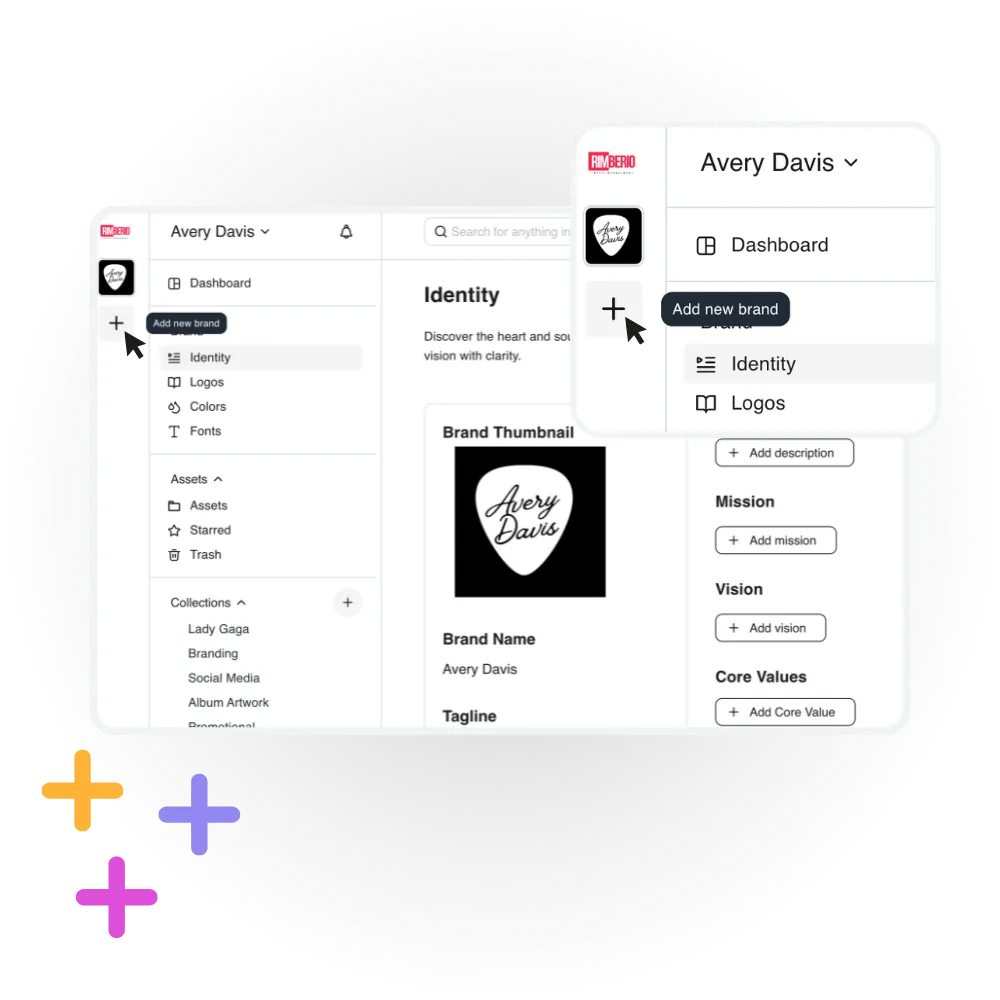
Manage multiple brands or sub-brands from a single dashboard, with separate asset libraries, style guides, and user permissions.
Custom brand guidelines

Build and share visual and verbal brand rules to ensure everyone, from new hires to global partners, stays on-brand.
Real-time collaboration

Collaborate on creative projects and campaigns with internal teams or external agencies, without endless email threads.
Usage analytics & governance
Track how assets are used, spot compliance gaps, and gain insights to improve brand consistency and performance.
Whether you're managing one brand or ten, BrandLife helps you maintain clarity, consistency, and control.
Ready to Transform Your Brand Management Strategy?
Effective brand management isn't just about creating guidelines—it's about building systems that scale your brand consistently across every touchpoint. From establishing clear brand pillars to implementing governance tools, the strategies in this guide help transform your brand from a visual identity into a valuable business asset.
While brand fragmentation remains a common challenge, especially as organizations grow, the right approach combines clear standards, cross-team alignment, and purpose-built technology to maintain brand integrity without sacrificing speed or creativity.
BrandLife's comprehensive brand management platform centralizes your assets, streamlines collaboration, and ensures consistency across all channels. Try BrandLife free for 14 days and discover how effortless brand management can be.
Frequently Asked Questions
Effective brand management includes a clear brand identity, consistent messaging, strong visual guidelines, cross-team alignment, and the use of technology to maintain asset control and enforce standards.
Consistent brand management builds trust by delivering reliable experiences and clear messaging, reducing customer uncertainty. This trust fosters loyalty, encourages repeat business, and turns customers into advocates who promote your brand organically.
Businesses should invest in a dedicated brand team when brand complexity grows, such as multiple products, markets, or channels, and maintaining consistency requires coordinated oversight to protect brand value and drive long-term growth.
The 3 Cs of brand management are Consistency (maintaining uniform brand expression across touchpoints), Clarity (ensuring your positioning and messaging are easily understood), and Continuity (evolving your brand thoughtfully while maintaining core identity). These principles help create a cohesive brand experience that builds recognition and trust over time.
The 4 levels of brand management are Strategic (long-term brand vision and positioning), Tactical (implementation across campaigns and channels), Operational (day-to-day governance and asset management), and Measurement (tracking brand performance and perception). Effective brand management requires attention to all four levels to build and maintain strong brand equity.
Brand management takes a broader, more strategic approach to building and maintaining the brand's overall identity and perception, while brand marketing focuses specifically on promoting products and services through campaigns and communications. Brand management establishes the framework and guidelines that brand marketing executes within, ensuring all marketing activities align with the brand's core identity and positioning.
Brand management success is measured through multiple metrics including brand awareness (recognition and recall), brand perception (sentiment analysis and surveys), brand equity (premium pricing power and customer loyalty), and operational efficiency (asset utilization and team productivity). Tools like brand tracking studies, social listening platforms, customer surveys, and analytics dashboards help quantify these metrics over time.
Common brand management mistakes include inconsistent application across channels, failing to document clear guidelines, neglecting internal brand education, resisting necessary evolution, overcomplicating the brand system, and not measuring brand performance. The most successful brands maintain consistency while allowing appropriate flexibility and regularly measure the impact of their brand management efforts.





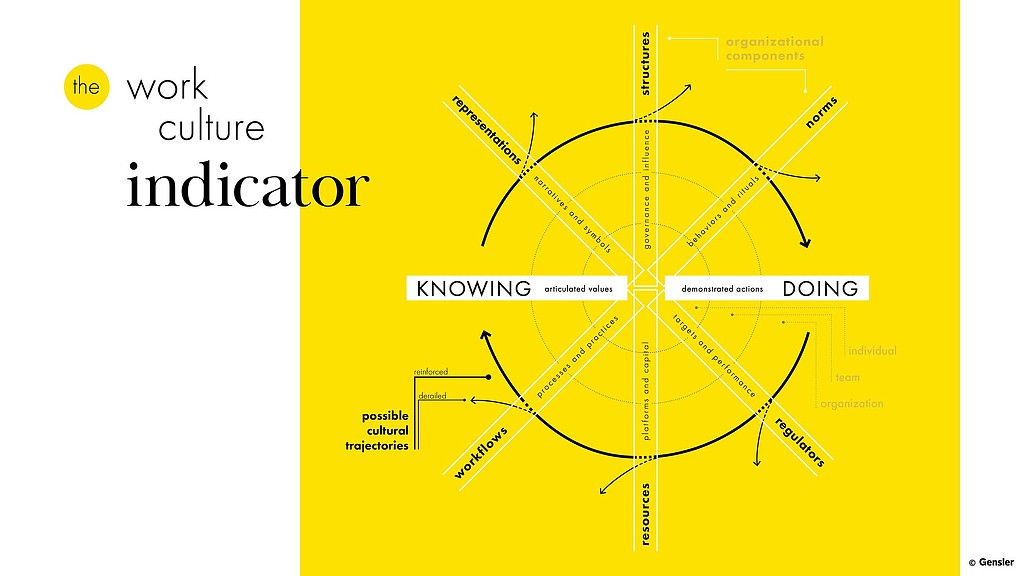
![Truth Well Told: Inside McCann Manchester’s take on Brand Strategy with Jordan [Interview]](https://cdn.prod.website-files.com/662ed3db96695bb4010b57c3/68b0a0d8c072b9fb3d1342bb_Untitleddesign-2024-10-16T122925.461.webp)
.webp)
